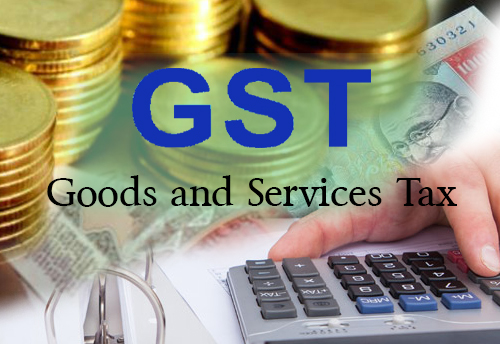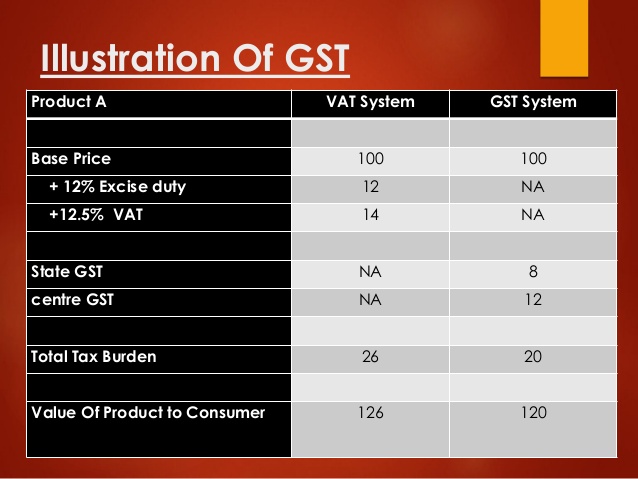
WHAT IS GST?
GST i.e.Goods and Service Tax is a unified tax that replaces several indirect taxesleviedby the Central Government and the State Government(s)....
Read more
39/2011-Cus, Dated: 02/09/2011
Self-Assessment in Customs
Circular No.39/2011-Customs 2nd September, 2011. ToAll Chief Commissioners of Customs / Customs (Prev.). All Chief Commissioners of Customs & Central Excise. All Commissioners of Customs / Customs (Prev.). All Commissioners of Customs & Central Excise. All Director Generals under CBEC. Subject: Self-Assessment in Customs - regarding. ***** Sir / Madam,Vide Finance Act, 2011, ‘Self-Assessment’ has been introduced under the Customs Act. Under ‘self-assessment’, responsibility of filing correct declaration lies with the importer or exporter. The declaration filed by the importer or exporter may be verified by the proper officer when so interdicted by the Risk Management systems (RMS). In rare cases, such interdiction may also be made with the approval of the Commissioner of Customs or an officer duly authorized by him, who shall not be below the rank of Additional Commissioner of Customs, and that will necessarily be done after making a record of the same in the EDI system. On account of interdictions, Bills of Entry may either be taken up for action of review of assessment or for examination of the imported goods or both. If the self-assessment is found to be incorrect, the duty may be reassessed. In cases where there is no interdiction, there will be no cause for the declaration filed by the importer to be taken up for verification, and such Bills of Entry will be straightaway facilitated for clearance without assessment and examination, on payment of duty, if any. 2. Further, provisions have been made in section 17 of the Customs Act, 1962 to empower the officers of Customs to carry out verification of correctness of assessment of duty relating to imported or export goods at premises of the importer or exporter. This will lead to introduction of ‘On-Site Post Clearance Audit’ in Customs in near future. The focus of self assessment is reliance on declarations made by the importer and exporter for higher facilitation of consignment at Customs stations and verification of correctness of documents at importer’s or exporter’s premises to detect any infringement. Thus, self-assessment has provided a legal framework to significantly enhance facilitation level in Customs by reducing pre-clearance checks based on risk parameters in case of self assessed documents. 3. It is felt that subsequent to introduction of self assessment, the existing facilitation levels under RMS could be increased as responsibility of filing correct declarations has been shifted to importers and exporters. The idea is to move towards a trust based Customs control. Therefore, risk based techniques are desired to be fine tuned to meet this objective. The risk parameters and risk rules should be so designed so as to have an effective interdiction system. The matter was also discussed in the meeting of National Risk Management Committee (NRMC) wherein it was decided that conceptually there should be a fixed target for facilitation for different facilities such as Air Cargo, ports, ICDs, etc. 4. It has been reported that the level of facilitation on an average in the last year in Air, Sea and ICD was 60%, 50% and 40% respectively. Also, large numbers of transaction selected by RMS were actually found to be compliant. Therefore, it is felt that there is a need to control the interdiction in RMS and comprehensively rationalize various interventions, targets, rules. Similarly, there is a need to check tendency of faulty and indiscriminate construction of targets, etc. by local Commissioners. It is on record that faulty and indiscriminate targets have resulted in false hits and unnecessary interventions. These ineffective interdictions have resulted in delay in clearance of goods. It is assumed that if this rationalization of redundant and ineffective targets of Local Risk Management (LRM) and National Risk Management (NRM) are carried out, the percentage of facilitation is bound to increase substantially. 5. To streamline the procedures and for effective implementation of self assessment using RMS, Board has decided that the facilitation target of 80% for Air Cargo Complexes, 70% for Seaports and 60% for ICDs should be achieved in the next six months. 6. Further, to make NRMC broad based, it is decided to include Joint Secretary (Customs), CBEC as one of the members of the Committee. Para 5.2 of Board’s Circular No.23/2007-Customs dated 28.6.2007 stands modified to the above extent. Board has also desired that meeting of NRMC should be held every quarter as outlined in the Board Circular without any exception 7. Board desires that decision taken by Board should be complied with strictly. DG (Systems) and RMD should ensure that necessary rationalization and fine-tuning of the Risk Management System is carried out in a time bound manner so that desired level of facilitation as set out by the Board in respect of Air Cargo Complexes, Seaports and ICDs can be achieved. Board also expects that DG (Systems) should send a report at the interval of two months detailing progress made in this regard to Board. The first such report may be sent on 25.10.2011. 8. Difficulty faced, if any, may be brought to notice of the Board immediately.Yours faithfully, |

GST i.e.Goods and Service Tax is a unified tax that replaces several indirect taxesleviedby the Central Government and the State Government(s)....
Read more
In pre-GST regime, goodswere liable to: (i) Excise Duty- on manufacture of goods; (ii) VAT/CST- on sale of goods; (iii) Entry tax- on ...
Read more
GST is levied on every taxable person. Taxable person means a person who carries on any business at any place in India. Such . ..
Read more
GST is a unified tax which is levied on: (i) goods; (ii) services and (iii) a mix of goods and/or services. Any supply of goods or services . .. ...
Read moreGST India Solution is an effort of firm of professionals who welcome implementation of GST. This is an interactiveplatformthat aspires to disseminate right knowledge to professionals, practitioners and public at large. This platform has beenfloatedbya firm of Chartered Accountants relentlessly working in field of direct and indirect taxes since early 1985.
READ MORE
Our core competence is statutory compliance, advisory, corporate tax planning and appellate matters of direct and indirect taxesandcorporate training sessions on GST.
The senior partner of the firm has to his credit several professional publications viz., Delhi Sales Tax Right to Use Goods Act, Delhi VAT, Maharashtra VAT, West Bengal VAT, Haryana VAT published by Taxmann. Madhya Pradesh VAT and Chhattisgarh VAT were published by Suvidha Law House, Bhopal. He has also addressed seminars on indirect taxes organized by professional bodies like ICAI, IMA, NIFM etc. and has also contributed articles on subjects of pro. . . . .